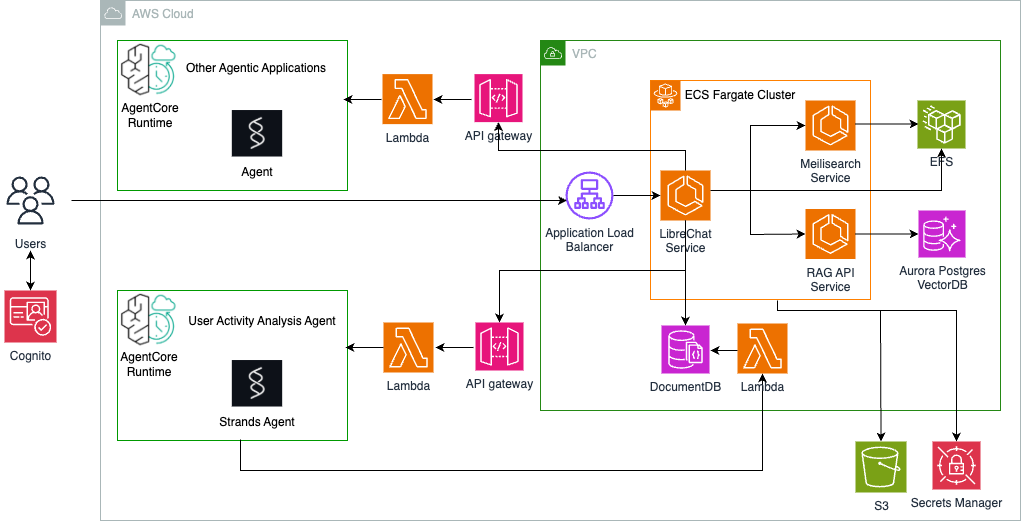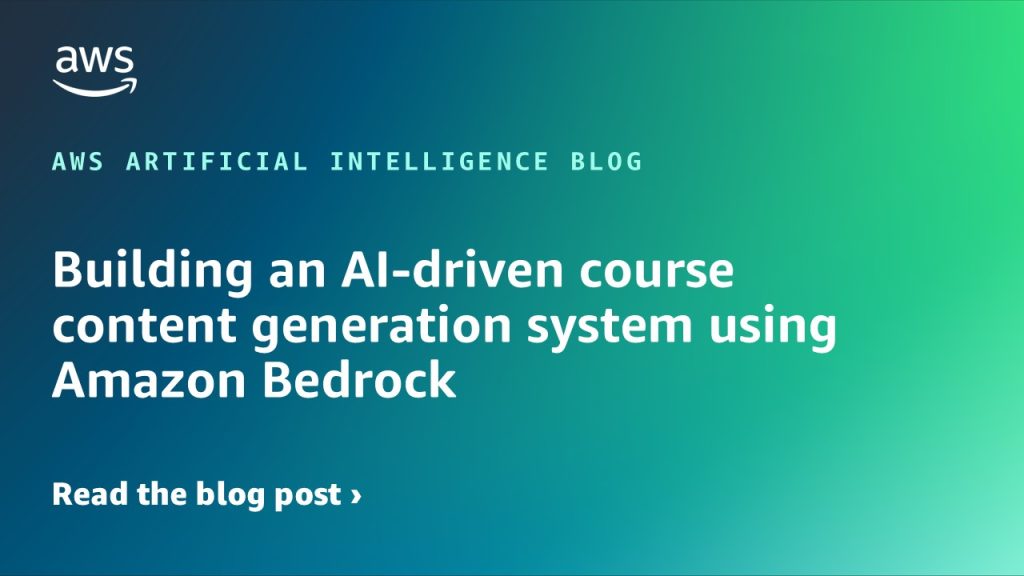Artificial Intelligence
Category: Education
Build and scale adoption of AI agents for education with Strands Agents, Amazon Bedrock AgentCore, and LibreChat
This post demonstrates how to quickly build sophisticated AI agents using Strands Agents, scale them reliably with Amazon Bedrock AgentCore, and make them accessible through LibreChat’s familiar interface to drive immediate user adoption across your institution.
Building an AI-driven course content generation system using Amazon Bedrock
In this post, we explore each component in detail, along with the technical implementation of the two core modules: course outline generation and course content generation.
Automate the creation of handout notes using Amazon Bedrock Data Automation
In this post, we show how you can build an automated, serverless solution to transform webinar recordings into comprehensive handouts using Amazon Bedrock Data Automation for video analysis. We walk you through the implementation of Amazon Bedrock Data Automation to transcribe and detect slide changes, as well as the use of Amazon Bedrock foundation models (FMs) for transcription refinement, combined with custom AWS Lambda functions orchestrated by AWS Step Functions.
Training Llama 3.3 Swallow: A Japanese sovereign LLM on Amazon SageMaker HyperPod
The Institute of Science Tokyo has successfully trained Llama 3.3 Swallow, a 70-billion-parameter large language model (LLM) with enhanced Japanese capabilities, using Amazon SageMaker HyperPod. The model demonstrates superior performance in Japanese language tasks, outperforming GPT-4o-mini and other leading models. This technical report details the training infrastructure, optimizations, and best practices developed during the project.
Improve public speaking skills using a generative AI-based virtual assistant with Amazon Bedrock
In this post, we present an Amazon Bedrock powered virtual assistant that can transcribe presentation audio and examine it for language use, grammatical errors, filler words, and repetition of words and sentences to provide recommendations as well as suggest a curated version of the speech to elevate the presentation.
Dynamic video content moderation and policy evaluation using AWS generative AI services
Organizations across media and entertainment, advertising, social media, education, and other sectors require efficient solutions to extract information from videos and apply flexible evaluations based on their policies. Generative artificial intelligence (AI) has unlocked fresh opportunities for these use cases. In this post, we introduce the Media Analysis and Policy Evaluation solution, which uses AWS […]
Build a serverless exam generator application from your own lecture content using Amazon Bedrock
Crafting new questions for exams and quizzes can be tedious and time-consuming for educators. The time required varies based on factors like subject matter, question types, experience level, and class level. Multiple-choice questions require substantial time to generate quality distractors and ensure a single unambiguous answer, and composing effective true-false questions demands careful effort to […]
Build a medical imaging AI inference pipeline with MONAI Deploy on AWS
In this post, we show you how to create a MAP connector to AWS HealthImaging, which is reusable in applications built with the MONAI Deploy App SDK, to integrate with and accelerate image data retrieval from a cloud-native DICOM store to medical imaging AI workloads. The MONAI Deploy SDK can be used to support hospital operations. We also demonstrate two hosting options to deploy MAP AI applications on SageMaker at scale.
Develop generative AI applications to improve teaching and learning experiences
Recently, teachers and institutions have looked for different ways to incorporate artificial intelligence (AI) into their curriculums, whether it be teaching about machine learning (ML) or incorporating it into creating lesson plans, grading, or other educational applications. Generative AI models, in particular large language models (LLMs), have dramatically sped up AI’s impact on education. Generative […]
Build a machine learning model to predict student performance using Amazon SageMaker Canvas
There has been a paradigm change in the mindshare of education customers who are now willing to explore new technologies and analytics. Universities and other higher learning institutions have collected massive amounts of data over the years, and now they are exploring options to use that data for deeper insights and better educational outcomes. You […]









